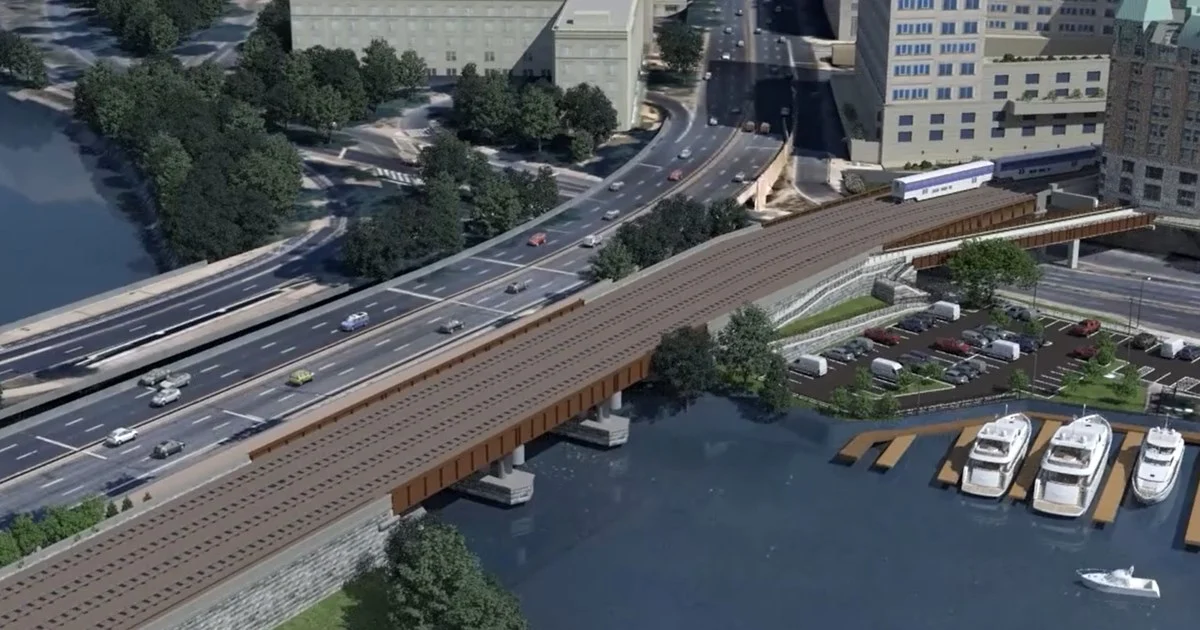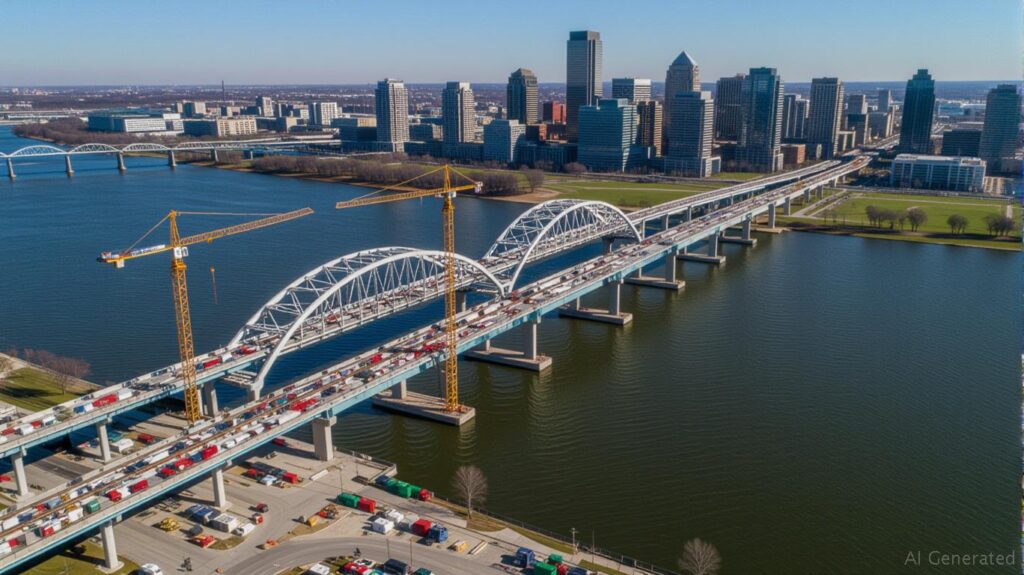
Skanska-Flatiron-Dragados JV Secures $1 Billion Long Bridge North Project Contract
The Skanska-FlatironDragados Joint Venture, in collaboration with the Virginia Passenger Rail Authority (VPRA), has officially transitioned from the planning phase to active construction on the Long Bridge North Project—marking a significant milestone in one of the most critical rail infrastructure undertakings in the Mid-Atlantic region. The $1 billion contract, awarded by VPRA, will deliver a modern and expanded rail corridor that will dramatically improve the capacity, reliability, and functionality of rail services between Washington, D.C. and Virginia.
A New Era for Rail Infrastructure in the Capital Region
Construction is set to commence in July 2025, with substantial completion projected for the fourth quarter of 2030. The Long Bridge North Project comprises approximately one mile of new rail infrastructure that will connect East Potomac Park to Washington, D.C.’s L’Enfant Interlocking—a vital junction in the regional and national rail network. The project is a key component of the broader 1.8-mile Long Bridge Project, which represents a generational investment in expanding and upgrading rail connections across the Potomac River.
“This project will dramatically improve how people and goods move through one of the busiest and most congested rail corridors in the United States,” said Michael Viggiano, Executive Vice President of Skanska USA Civil. “Skanska is honored to lead the construction team in partnership with FlatironDragados and VPRA. With planning approvals secured and funding in place, we are now ready to move forward with delivering this transformative infrastructure.”
About the Long Bridge Project
The full Long Bridge initiative consists of two main components: the Long Bridge North and Long Bridge South Projects. Together, they aim to double existing capacity by replacing the aging two-track bridge system with four modern rail tracks extending across the Potomac River, connecting Arlington, Virginia to downtown Washington, D.C. The project is expected to enhance the movement of both freight and passenger rail while minimizing conflicts between the two, a major concern on the current alignment.
The Long Bridge itself—originally constructed in 1904 and currently operated by CSX Transportation (CSXT)—has long been a bottleneck in the region’s transportation system. It serves as a vital link for CSXT freight services and for passenger trains operated by Amtrak and Virginia Railway Express (VRE). The new infrastructure will preserve the function of the existing bridge while enabling a significant increase in rail capacity, especially for passenger service.
The Long Bridge North Scope of Work
The scope of the Long Bridge North Project involves the complete replacement and expansion of the current two-track rail corridor with a four-track system. This new corridor will extend from the southern shoreline of the Potomac River, run through East Potomac Park, span the Washington Channel, and ultimately integrate into the existing L’Enfant Interlocking—a key rail junction just south of the National Mall.
Work will include the construction of new rail bridges over both the Washington Channel and other surrounding water bodies, structural enhancements to existing rail infrastructure, utility relocations, and the installation of new signaling and communication systems. Additionally, the Joint Venture will implement environmental mitigation strategies to minimize disruption to East Potomac Park and other sensitive areas within the National Park Service jurisdiction.
“FlatironDragados is pleased to move forward from planning to construction in partnership with Skanska and the Virginia Passenger Rail Authority,” said Jim Schneiderman, Executive Vice President of FlatironDragados. “This project has been a collaborative effort from the beginning, and through that teamwork, we’ve optimized the design and construction approach to reduce risk, enhance cost predictability, and maintain scheduling certainty.”
Improved Passenger and Freight Coordination

A major outcome of the project will be the separation of freight and passenger rail services to improve overall operational efficiency. The revitalized eastern set of tracks—running over the refurbished portion of the existing bridge—will primarily be used by CSXT for freight operations. In contrast, the newly constructed western tracks will be dedicated to passenger services provided by Amtrak’s long-distance and state-supported Amtrak Virginia routes, as well as Virginia Railway Express (VRE) commuter lines.
This functional segregation will significantly reduce delays, improve schedule reliability for passenger trains, and provide greater capacity for freight movement—all of which are essential to supporting regional growth, improving commuter experiences, and advancing national supply chain resilience.
A Multi-Agency Collaboration
The Skanska-FlatironDragados Joint Venture is working closely with a broad array of public and private stakeholders to deliver the project, including CSXT, Amtrak, VRE, the District Department of Transportation (DDOT), the Federal Railroad Administration (FRA), and the National Park Service (NPS). This coordinated approach ensures alignment across all regulatory and operational entities involved in the corridor and promotes a unified vision for long-term rail development in the region.
“We’re building more than tracks and bridges—we’re building the foundation for the future of rail mobility in the Capital Region,” said a spokesperson for VPRA. “This effort exemplifies what can be achieved through public-private partnerships and a commitment to delivering value for generations to come.”
Environmental Considerations and Community Impact
Given the project’s location—traversing national parklands and sensitive aquatic ecosystems—the Long Bridge North Project incorporates a strong emphasis on environmental stewardship. The Joint Venture has committed to using best practices in sustainable construction, including advanced stormwater management systems, habitat restoration strategies, and construction methods designed to minimize disruption to natural and recreational areas.
Additionally, the project will enhance multimodal connectivity by improving access points for pedestrians and cyclists along the corridor, aligning with broader regional goals for sustainable transportation and community integration.
Economic and Strategic Significance
The economic and strategic benefits of the Long Bridge North Project extend far beyond the immediate construction zone. Once complete, the expanded capacity will enable the doubling of VRE service, support additional Amtrak trips, and facilitate expanded freight activity, reducing pressure on congested roadways and contributing to lower greenhouse gas emissions.
It is expected that the project will also generate significant employment opportunities throughout its lifecycle. Construction activities will support hundreds of jobs across a range of skilled trades and project management disciplines, injecting economic momentum into the local and regional economies.
About the Skanska-FlatironDragados Joint Venture
The Joint Venture brings together the combined strengths of three infrastructure leaders:
- Skanska is one of the world’s largest development and construction companies, with deep expertise in complex civil infrastructure projects.
- Flatiron is a leading transportation contractor in North America, known for its work on bridges, highways, and rail systems.
- Dragados, a subsidiary of ACS Group, brings international experience in the design and execution of large-scale transport projects, including tunnels, bridges, and rail corridors.
Together, they represent a powerful alliance capable of delivering innovative, technically complex, and high-value infrastructure solutions on time and on budget.




